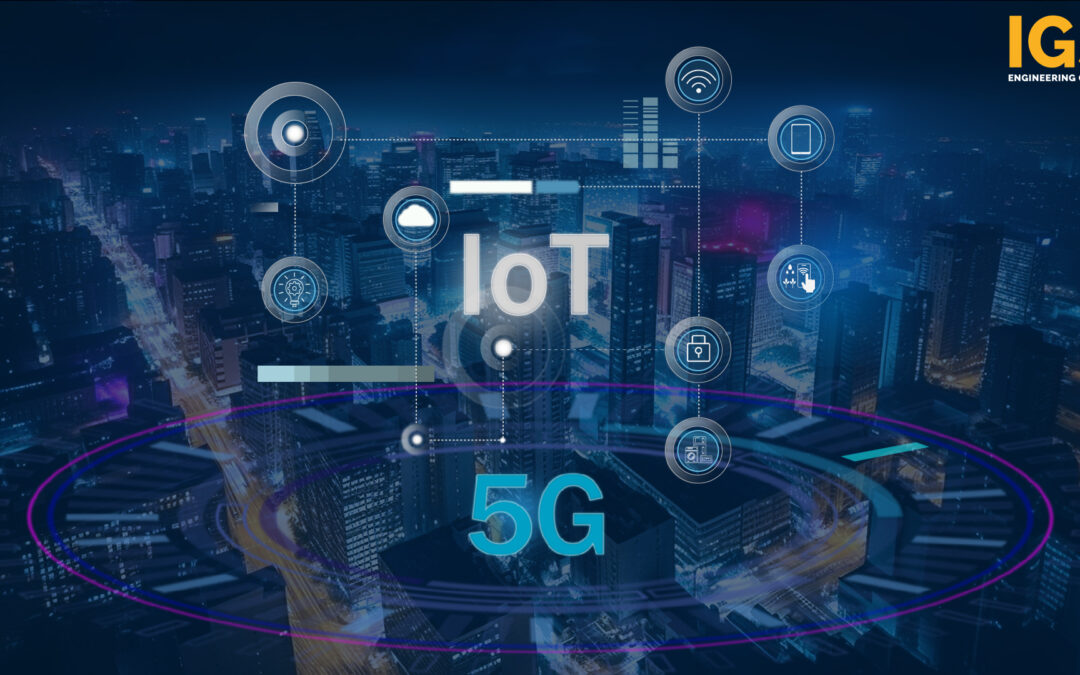
5G and the Internet of Things: A Powerful Duet in a New Era
5G and the Internet of Things: A Powerful Duet in a New Era
The Internet of Things (IoT) has been steadily transforming our world, connecting everyday devices to a vast network of information exchange. But with the burgeoning number of connected devices, existing technologies like 4G are starting to strain under the pressure. Enter 5G, the next generation of cellular network technology, poised to revolutionize the way we interact with the world around us, particularly in the realm of IoT.
This blog delves into the exciting world of 5G and IoT, exploring the latest trends, groundbreaking applications, practical implementation strategies, and the challenges that need to be addressed for this powerful duet to reach its full potential.
Trends Shaping the 5G-IoT Landscape
The 5G-IoT landscape is a dynamic one, constantly evolving with new advancements and applications. Here are some key trends shaping the future:
- Network Slicing: 5G networks can be virtually divided into multiple slices, each catering to specific needs. This allows for optimized performance for different IoT applications, ensuring low latency for critical tasks like remote surgery and high bandwidth for data-intensive industrial automation.
- Massive Machine-Type Communication (mMTC): 5G is designed to handle a massive influx of low-power, low-data devices. This opens doors for applications like smart city infrastructure monitoring with millions of sensors collecting data simultaneously.
- Edge Computing: Processing data closer to where it’s generated, at the network edge, reduces latency and bandwidth consumption. This is crucial for real-time applications like autonomous vehicles and industrial control systems.
- Artificial Intelligence (AI) Integration: AI algorithms can analyze the vast amount of data collected by IoT devices, enabling predictive maintenance, anomaly detection, and automated decision-making for smarter and more efficient operations.
Unleashing the Power of 5G-IoT Applications
The synergy between 5G and IoT unlocks a treasure trove of potential applications across various sectors. Let’s explore some exciting possibilities:
- Smart Cities: Imagine a city where traffic lights adjust to real-time congestion, waste collection is optimized based on sensor data, and environmental conditions are monitored for better resource management. 5G-enabled IoT can make this a reality, paving the way for a more sustainable and efficient urban environment.
- Industrial Automation: Factories of the future will be awash with sensors monitoring machine health, production lines, and inventory levels. 5G’s high bandwidth and low latency will enable real-time data analysis, predictive maintenance, and remote control of robots, leading to increased productivity and reduced downtime.
- Connected Healthcare: Remote patient monitoring, real-time health data analysis, and even remote surgeries assisted by robots – 5G-powered IoT can revolutionize healthcare. Wearable devices can continuously track vital signs, while surgeons can perform complex procedures with minimal invasiveness.
- Connected Agriculture: Farmers can leverage 5G-enabled sensors to monitor soil moisture, crop health, and weather conditions. This data can then be used for precision irrigation, targeted fertilization, and optimized crop management, leading to improved yields and resource efficiency.
Implementing 5G-IoT: Challenges and Considerations
While the potential of 5G-IoT is undeniable, there are challenges that need to be addressed for widespread adoption:
- Infrastructure Investment: Deploying a robust 5G network infrastructure requires significant investment in base stations, fiber optic cables, and network upgrades. The initial costs can be a hurdle, especially for rural areas.
- Device Standardization: The lack of standardized protocols for communication between different devices and platforms can hinder seamless integration and interoperability within the IoT ecosystem.
- Security Concerns: The vast amount of data generated by IoT devices creates a vulnerability landscape that needs robust security measures. Encryption, access control, and data privacy protocols are essential to secure this interconnected world.
- Battery Life Optimization: Many IoT devices are battery-powered, and 5G’s higher power consumption can pose a challenge. Optimizations in both hardware and software are necessary to ensure long battery life for these devices.
Collaborative Efforts for a Connected Future
Overcoming these challenges requires a collaborative effort from various stakeholders. Governments can incentivize infrastructure investments, industry leaders can work on device standardization, and security experts can develop robust data protection solutions. By working together, we can unlock the full potential of 5G-IoT and usher in a more connected, efficient, and intelligent future.
In conclusion, the marriage of 5G and IoT presents a transformative opportunity. From revolutionizing industries to improving our daily lives, the possibilities are endless. By addressing the existing challenges and fostering collaboration, we can pave the way for a future where technology seamlessly integrates with our world, creating a smarter and more connected reality.
